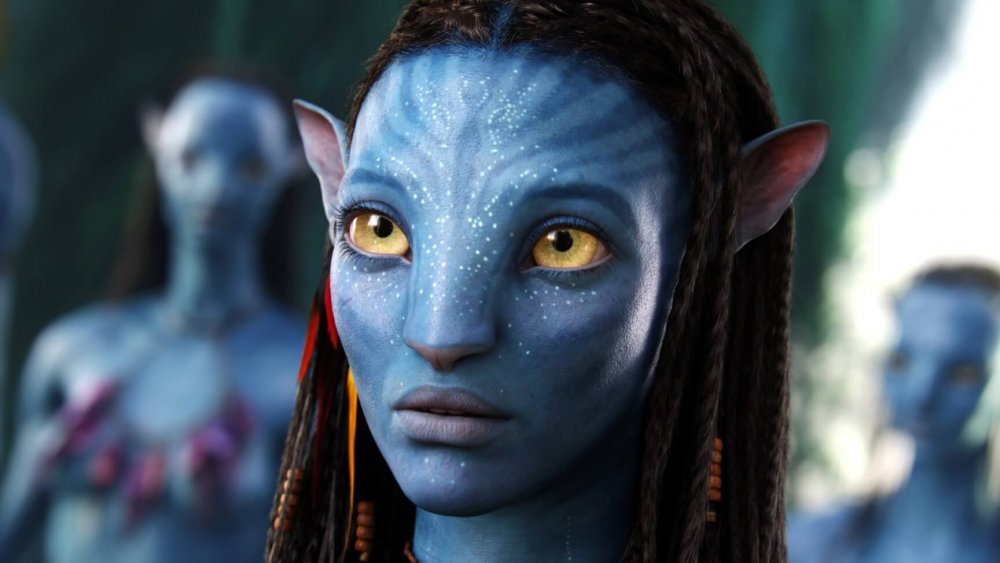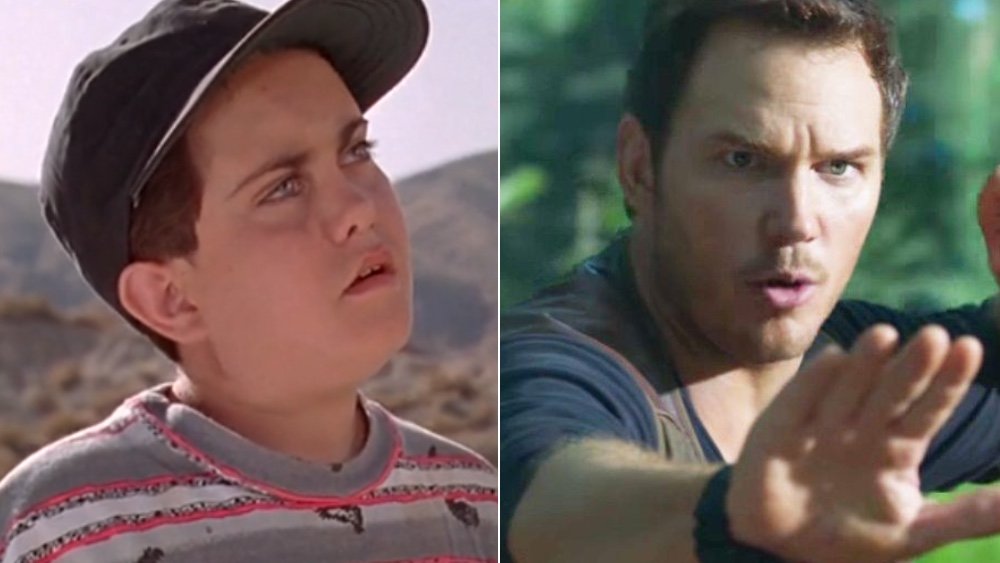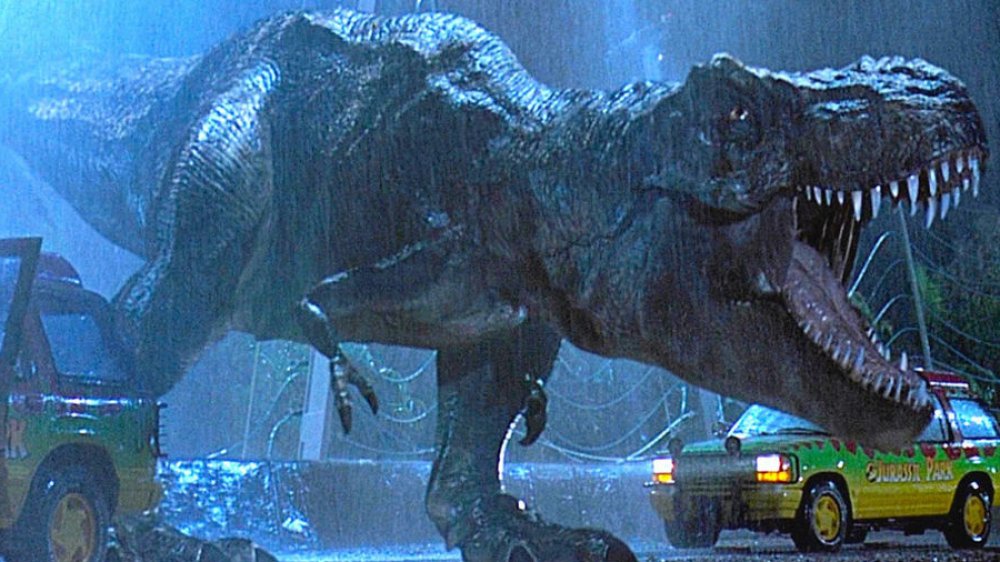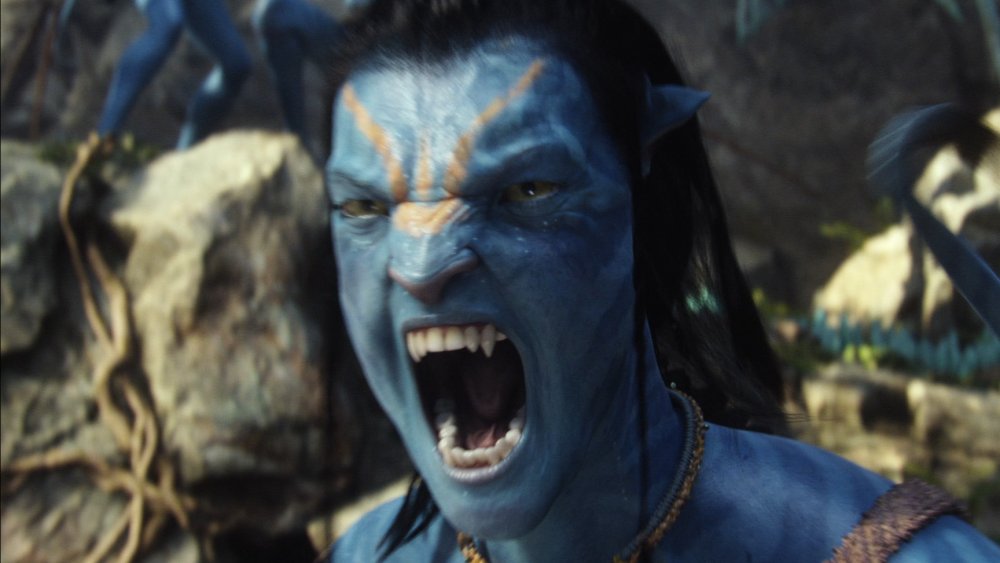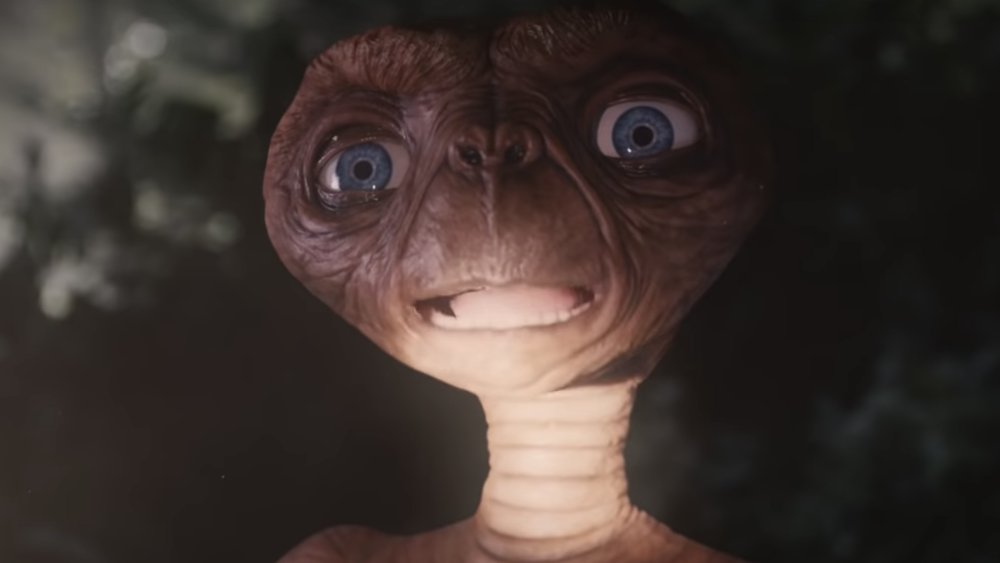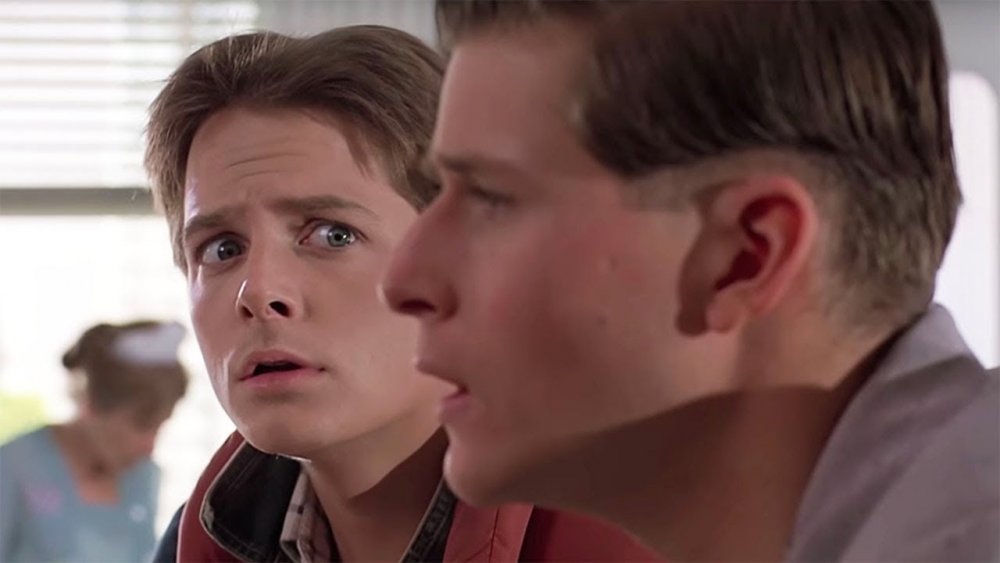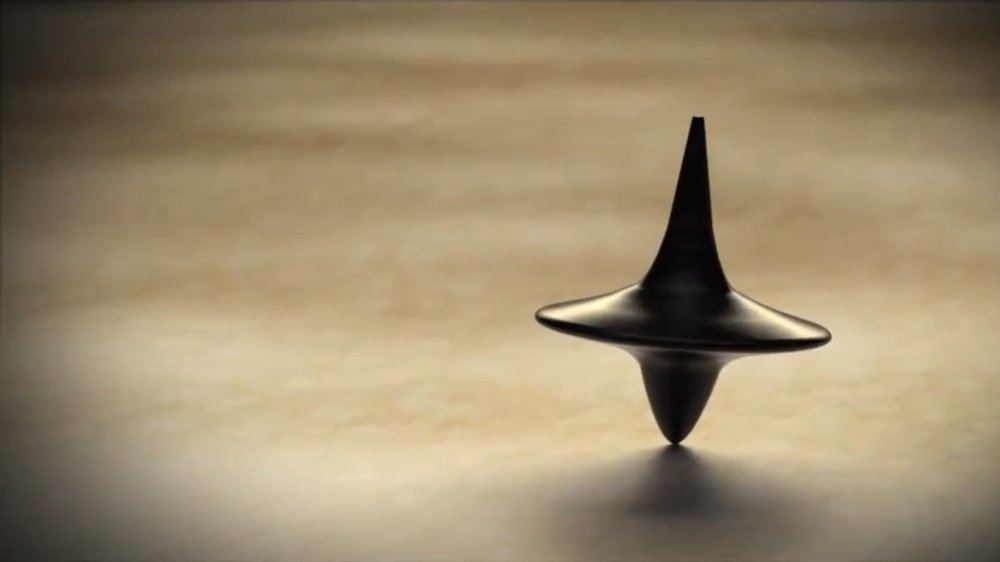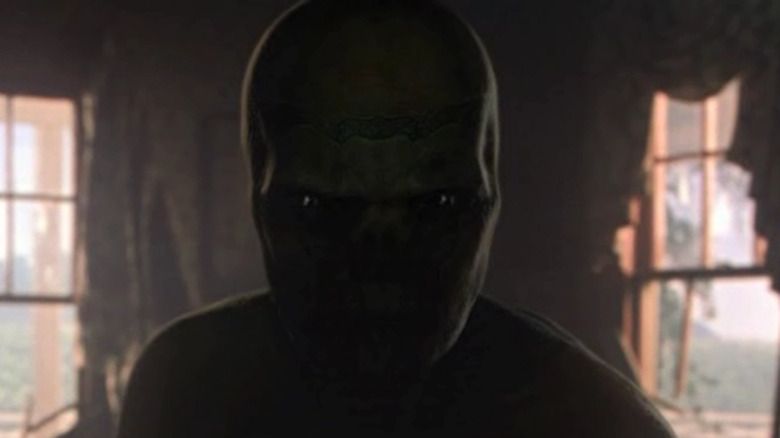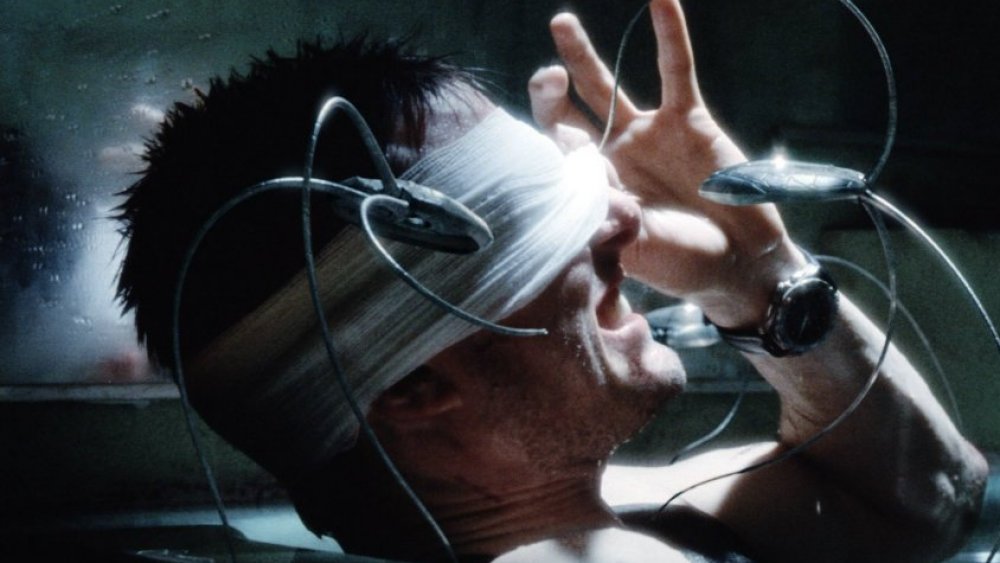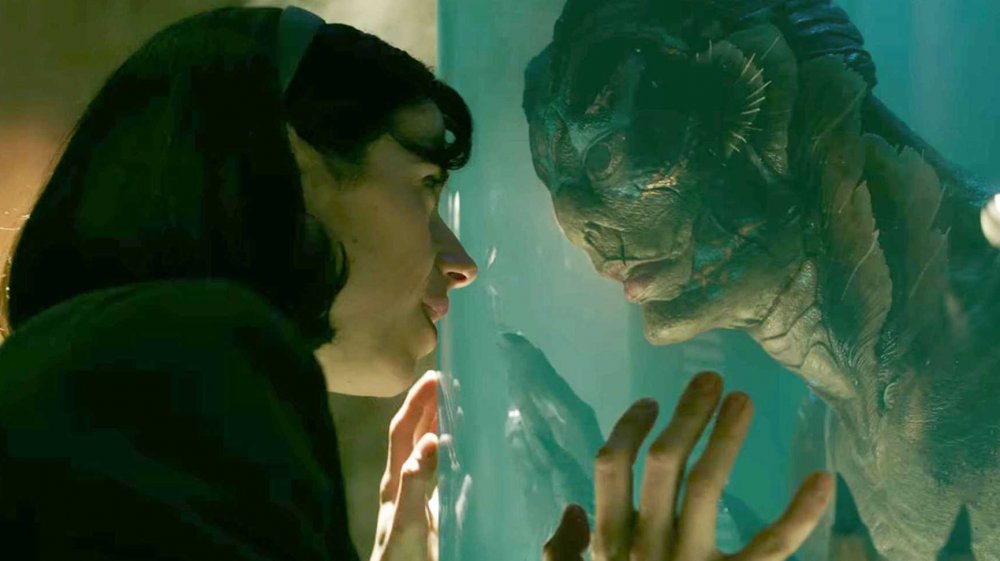Sci-Fi Movie Theories That Change Everything
Fan theories are wild and absurd, but also fascinating and fun. Armed with the literary analysis skills learned in a high school English class, the most astute and attentive among a popular film's millions of viewers notice seemingly minor details of a film and blow them up to often illogical (and amusing) heights. According to these amateur film theorists, connections to other films are hiding in plain sight, as are revealing details about a character's true, dark nature, or foreshadow future events, or explain what may otherwise appear to be a gaping plot hole. The one thing fan theories (and the people who spread them) can't explain is why screenwriters or filmmakers would bury such massively important plot elements and character traits and hope against hope that an intelligent and intuitive fan would find them one day.
Science fiction movies seem to be the type most likely to earn the fan theory treatment, perhaps because they're so popular, or because they already contain a lot of objectively weird stuff. At any rate, there are some ideas about sci-fi movies floating around the internet and movie chat circles that are so insightful that they could very well be true. These are the sci-fi movie theories that change everything.
The scared kid from Jurassic Park is the hero of Jurassic World
There are three children in the original Jurassic Park from 1993. There's Tim (Joseph Mazzello) and Lex (Ariana Richards), grandchildren of park maker John Hammond, who spend the movie getting stalked by velociraptors. But there's another kid who only appears in one scene in the movie — the character doesn't even get a real name. He's "Volunteer Boy," as portrayed by Whit Hertford. He helps Dr. Alan Grant (Sam Neill) deliver some necessary exposition about raptors while on an excavation of a fossil of the remains of the beast in Montana. The Volunteer Boy is unimpressed, and compares the small dinosaur to a turkey. That leads Dr. Grant to set the boy straight, and he describes in explicit, vicious detail exactly how the raptor would attack, shred, disembowel, and eat him alive, were it to encounter him.
A bizarre but compelling fan theory posits that Volunteer Boy took Dr. Grant's suggestion to "show a little respect" to the raptors to heart: the kid grew up to be Owen Grady, the ex-military animal behavior expert hired to do research (and keep the peace) at the new and improved dinosaur theme park in Jurassic World. Some things do line up to support the idea: Owen is played by Chris Pratt, who is just about the same age as Hertford, and at one point he comments that he understands the raptors because they have "a relationship based on respect."
The dinosaurs in Jurassic Park were faked
Jurassic Park was an enormously successful techno-thriller from bestselling author Michael Crichton, and Steven Spielberg turned it into an even more popular blockbuster movie in 1993. The premise is simple and appealing: A remote theme park is full of dinosaurs re-created with recovered DNA, until the creatures run amok, putting humans in jeopardy. Jurassic Park is the brainchild of Dr. John Hammond, who claims to have made the giant beasts out of blood-borne dinosaur genetic material found in amber-preserved mosquitos. Another bit of exposition, delivered by Jurassic Park scientist Dr. Henry Wu, helps to explain why the dinosaurs rampage later on — there were holes in the dinosaurs' genetic code, so they had to be filled in with the DNA of other animals.
This, along with Dr. Hammond's confession that he began his professional life as a charlatan and a showman by operating a flea circus, led to the fan theory that the dinosaurs in Jurassic Park aren't really dinosaurs. There weren't holes in the dino DNA. Hammond, Wu, and others had a blank slate — they spliced together all kinds of animal DNA to create brand-new creatures that look like what the general public thinks of when they think of dinosaurs. This would explain why the dinosaurs in the park aren't scientifically accurate — had the techs used actual dinosaur DNA, the beasts would have feathers, and the velociraptors would have been much smaller.
Humans have already been to Pandora from Avatar
Audiences were so dazzled by the stunning, CGI-created planet Pandora of Avatar upon its release in 2009 that it became the highest-grossing movie of all time worldwide. So distracted and overwhelmed were viewers by the intoxicating scenery and beautiful and exotic Na'vi creatures concocted by writer-director James Cameron that they failed to ask a lot of questions about the world of the movie. For one, it's extremely convenient for the human visitors (or their avatars) that the Na'vi are so human-like, able to communicate and connect with them on a spiritual and physical level. Apart from the blue skin and a few other minor features, the Na'vi look just like humans. According to a fan theory, there's a good reason for that — they're descended from humans.
The theory holds that centuries before Jake Sully and his immediate predecessors visited Pandora to mine for unobtanium, another human contingent did. And just as Jake and Neytiri fell in love, so too did these old-timey astronauts become entranced with the native race, and they ultimately had babies together, which became the Na'vi.
E.T.: The Extra-Terrestrial Jedi
From the late '70s and through the '80s, there were no bigger movies than the original Star Wars trilogy and E.T.: The Extra-Terrestrial. The guys who created those legendary films, George Lucas and Steven Spielberg, are close friends, and have placed entertaining Easter eggs paying tribute to each other's work in their movies. These actions are little more than pals giving each other a shoutout amidst their multi-million-dollar sci-fi extravaganzas, but film fans have interpreted them as the basis of an overarching fan theory that reveals a lot about the title character of E.T., and how he fits into the extended Star Wars universe.
In 1982's E.T.: The Extra-Terrestrial, Elliott (Henry Thomas) takes his little alien friend trick-or-treating, covering up his alien features with a white sheet, a de facto ghost costume. E.T. sees a kid walk by in a Yoda costume and excitedly makes a lot of noise in recognition — implying that E.T. knows Yoda, or an alien creature of the same race. Nearly two decades later, in Lucas' Star Wars: Episode I – The Phantom Menace, a scene in the Galactic Senate offers a brief glimpse at a certain delegation... of creatures that look exactly like E.T. This all means that E.T. and Star Wars take place in the same reality, and moreover, E.T.'s powers — telekinesis, telepathy — suggest that he's a Jedi, just like Yoda.
George McFly knew his son was a time traveler in Back to the Future
It's probably the most lingering, and difficult to answer, question about Back to the Future: How come neither George McFly or Lorraine McFly never seemed to notice that their teenage son Marty looked and acted exactly like that guy Calvin Klein, who they knew for a week in high school in the 1950s, and who worked hard to make sure they became a couple? According to some fan theorists on the Reddit page "George McFly Knew," Marty's father actually figured it out, eventually.
George McFly loves science fiction so much that in the revised 1985 at the end of Back to the Future, he's a successful author in the genre, of the hit novel A Match Made in Space. His appreciation of sci-fi would make him aware of and accepting of its tropes, even in his real life. The theory suggests that by the time his son was mostly grown and his resemblance to "Calvin Klein" (time-traveling Marty) solidified, George would have put the puzzle together, recalling the future references and anachronisms he inadvertently peppered into his conversation and behavior, like talking about the "planet Vulcan" (from Star Trek), ordering the '80s beverage Pepsi Free, or playing "Johnny B. Goode" at a school dance before Chuck Berry released it. George never lets on that he knows because Marty's mission was agreeable — to ensure that he and Lorraine fell in love.
Cobb's totem in Inception isn't the top
Christopher Nolan's 2010 trippy, mind-bending sci-fi thriller Inception is a dream. Or it's not a dream. Or it's a dream inside of a dream inside of a dream. The most clearly defined thing about Inception is that it's extremely tough for audiences to figure out just what is "real" and what isn't as thief Dom Cobb and his team attempt to enter the dreams of other people and implant ideas. One rule of Inception makes things somewhat more trackable for both audiences and its characters: Cobb carries an important physical object called a "totem," and how it behaves from moment to moment determines whether he's in a dream or not.
Cobb's totem is a silver top — if it spins without tipping over, he's dreaming, but if it does eventually topple, that's because the rules of reality's physics apply. Nolan teases the audience with an ambiguous ending, in which Cobb spins a top and then walks away (and the footage cuts out) before the object can be given a chance to fall. Some of Inception's most attentive fans believe there's a much more obvious clue as to whether or not he's dreaming — Cobb's wedding ring is his real totem. In scenes explicitly depicted as dreams, he's sporting the ring. In the real world, the widower isn't wearing it. That means at the end of Inception, when Cobb is ringless, he's back in the real world.
The aliens are demons? The Signs are there
Signs made three in a row for writer-director M. Night Shyamalan — a trilogy of blockbuster sci-fi horror movies that hinged on a plot twist. While the turns in The Sixth Sense and Unbreakable were inspired (Bruce Willis' character was a ghost; Samuel L. Jackson's character was a supervillain), the one that saves the heroes in Signs is a bit inexplicable.
Signs is about former priest Graham Hess (Mel Gibson) and his family, who discover creepy crop circles on their farm as well as weird lights up in the sky. These are telltale signs of aliens, of course (or at least movie-style aliens). When the audience finally gets a brief glimpse after the creatures touch down and enter the Hess family home, they're subdued and destroyed by... water. Yep, the thing that makes Earth habitable and comprises most of the human body kills these creatures from another world. It was probably foolhardy for them to land on a planet with so much water, and where the stuff regularly comes out of the sky, but maybe that has nothing to do with it, if a fan theory is to be believed. According to one interpretation, the aliens are actually demons, minions of Satan sent from below to terrorize Earth. The reason they're done in by common water is because it came out of the pipes of a house occupied by a former priest — thereby making it holy water that he inadvertently blessed with his religiosity.
Minority Report is a dream, just like they said
It's the biggest cliché and cop-out in all of narrative fiction — the protagonist has a mind-boggling experience, and in the end they wake up, as the whole adventure has been a dream. The Wizard of Oz pulled off this trick, but that film is so popular and well-known that to try the "it was all a dream" again feels like a ripoff, in addition to being underwhelming to audiences. Nevertheless, filmmakers may still have that plot twist in mind, and they just go about in a very subtle way. That's the heart of a film theory surrounding the 2002 sci-fi smash Minority Report.
Tom Cruise stars as Chief John Anderton, part of a future police unit that can arrest murderers before they murder, thanks to the psychic, prophetic visions of "Precogs." Anderton's life is thrown into disarray when he himself is accused of a murder that hasn't happened yet. He's placed into a virtual reality prison, essentially a dream, and a guard quips, "They say your life flashes before your eyes, that all your dreams come true." Then Anderton breaks out of his VR jail, defeats the real villain, and has a happy ending. Or not — one fan theory states that Anderton never emerged from his dreamlike virtual reality state. All of his dreams came true, just like the guard predicted and clearly stated... but just not for real.
There's more than one fish monster in The Shape of Water
In 2018, Guillermo del Toro's The Shape of Water won Best Picture at the Academy Awards. It likely transcended awards shows' usual dismissal of genre fare because it wasn't only a science-fiction story — like classic sci-fi literature, it was allegorical to universal themes of the human experience, such as love, identity, and the profundity of connecting to another living being. The main story is about Elisa, a cleaning lady unable to speak who works at a secret government lab in the early '60s and discovers the facility's most notable resident: a South American fish-man-monster. Their relationship is one of deep, lasting, and meaningful bonds, and presented as unlikely, as both reside on the fringes of society and are also very different from one another, Elisa being a human woman and he being an amphibian man nicknamed Amphibian Man.
According to Forbes writer Paul Tassi, their love isn't actually that strange, because Elisa is also a fish person. Like a fish, she can't talk, owing to larynx-destroying cuts on her neck that ultimately become gills. Further, she was discovered abandoned as a child near a river, perhaps one from which she emerged, and she very easily takes to water throughout the film, and adapts swimmingly to her brand-new gills at its conclusion.
